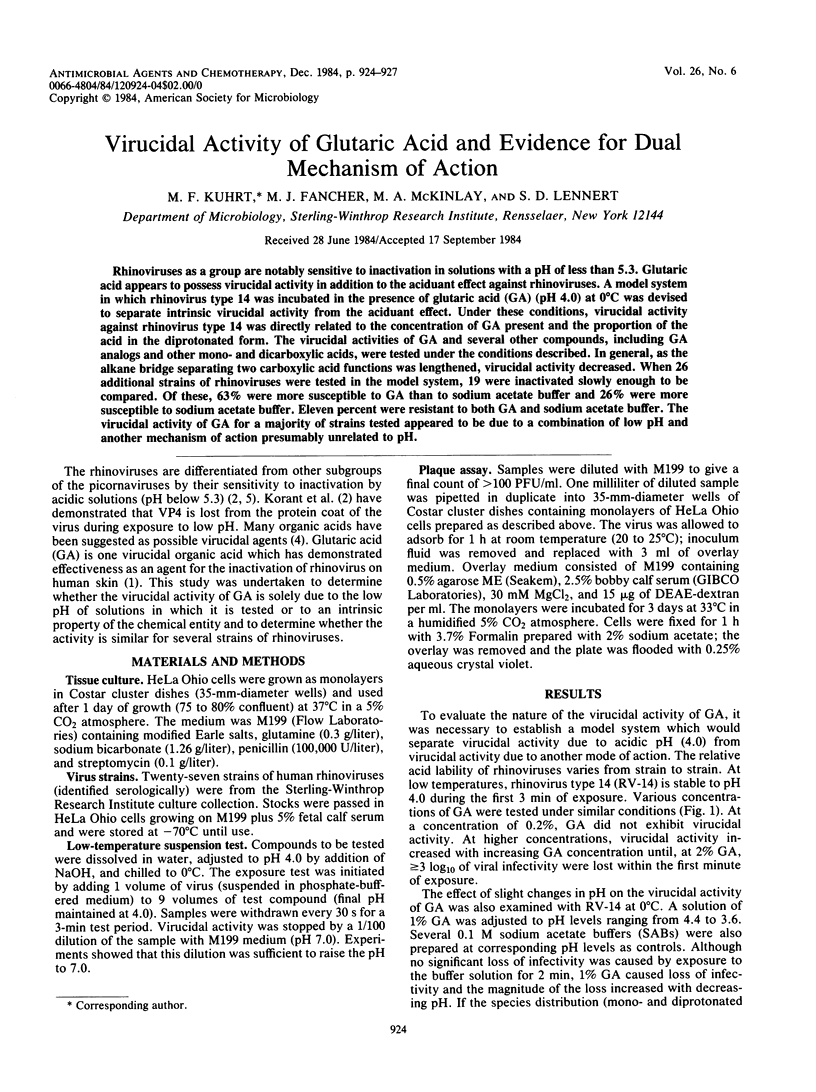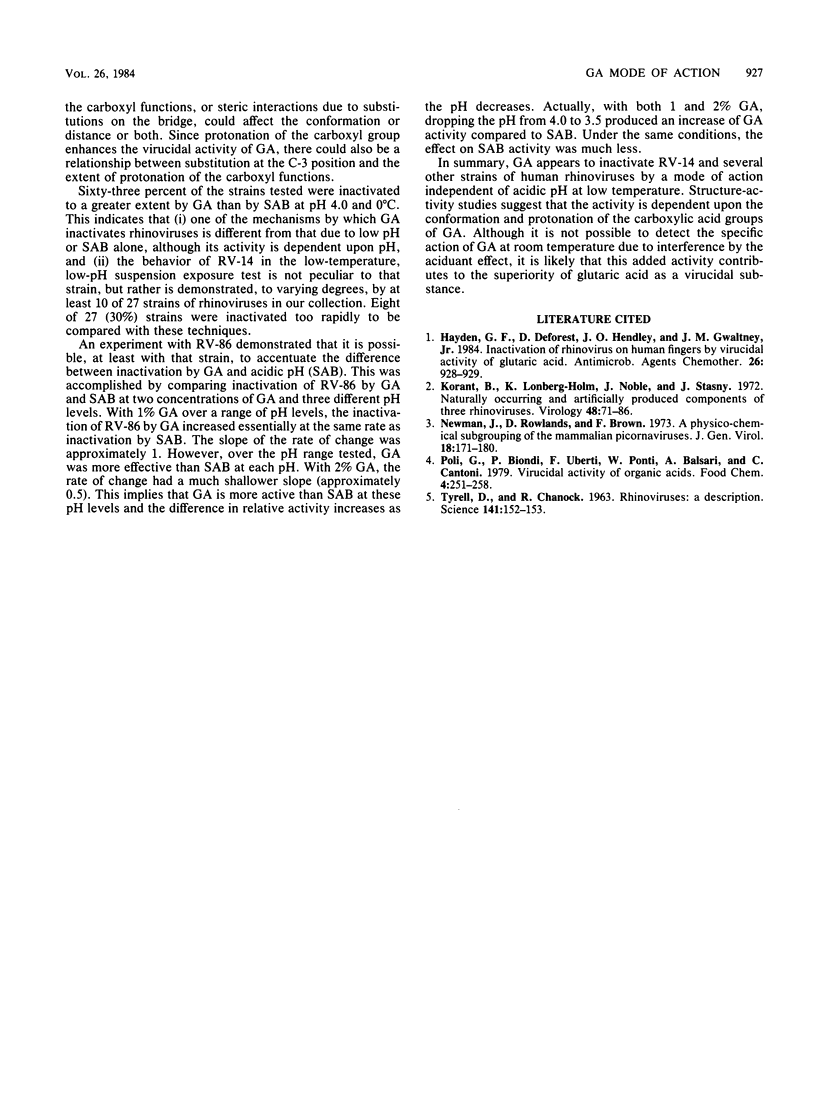Abstract
Rhinoviruses as a group are notably sensitive to inactivation in solutions with a pH of less than 5.3. Glutaric acid appears to possess virucidal activity in addition to the aciduant effect against rhinoviruses. A model system in which rhinovirus type 14 was incubated in the presence of glutaric acid (GA) (pH 4.0) at 0 degrees C was devised to separate intrinsic virucidal activity from the aciduant effect. Under these conditions, virucidal activity against rhinovirus type 14 was directly related to the concentration of GA present and the proportion of the acid in the diprotonated form. The virucidal activities of GA and several other compounds, including GA analogs and other mono- and dicarboxylic acids, were tested under the conditions described. In general, as the alkane bridge separating two carboxylic acid functions was lengthened, virucidal activity decreased. When 26 additional strains of rhinoviruses were tested in the model system, 19 were inactivated slowly enough to be compared. Of these, 63% were more susceptible to GA than to sodium acetate buffer and 26% were more susceptible to sodium acetate buffer. Eleven percent were resistant to both GA and sodium acetate buffer. The virucidal activity of GA for a majority of strains tested appeared to be due to combination of low pH and another mechanism of action presumably unrelated to pH.
Full text
PDF



Selected References
These references are in PubMed. This may not be the complete list of references from this article.
- Hayden G. F., Deforest D., Hendley J. O., Gwaltney J. M., Jr Inactivation of rhinovirus on human fingers by virucidal activity of glutaric acid. Antimicrob Agents Chemother. 1984 Dec;26(6):928–929. doi: 10.1128/aac.26.6.928. [DOI] [PMC free article] [PubMed] [Google Scholar]
- Korant B. D., Lonberg-Holm K., Noble J., Stasny J. T. Naturally occurring and artificially produced components of three rhinoviruses. Virology. 1972 Apr;48(1):71–86. doi: 10.1016/0042-6822(72)90115-8. [DOI] [PubMed] [Google Scholar]
- Newman J. F., Rowlands D. J., Brown F. A physico-chemical sub-grouping of the mammalian picornaviruses. J Gen Virol. 1973 Feb;18(2):171–180. doi: 10.1099/0022-1317-18-2-171. [DOI] [PubMed] [Google Scholar]
- TYRRELL D. A., CHANOCK R. M. Rhinoviruses: a description. Science. 1963 Jul 12;141(3576):152–153. doi: 10.1126/science.141.3576.152. [DOI] [PubMed] [Google Scholar]


